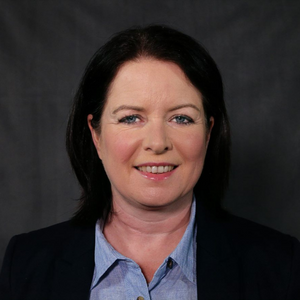There are various types of formal insolvency events available to a company in financial difficulties, all of which affect directors in slightly different ways.
Here our insolvency solicitors set out what happens to a director on each of the main formal insolvency events, and how directors might be affected by these events. Along with the general considerations of the company and the circumstances it may find itself in, the different impact of each type of insolvency on the directors themselves may help the board of directors choose the right path for them and the company.
We do not discuss here in any depth the risks to a director personally on each of these insolvency processes, which can be potentially serious. For full details on these see: Directors duties: what are they on insolvency, and how can a director avoid personal liability for breach? We also don’t discuss here directors role in a solvent liquidation. For more on this see: Corporate insolvency: member’s voluntary liquidation explained.
What are the different types of formal insolvency?
Creditors voluntary liquidation (CVL)
A Creditor’s Voluntary Liquidation (CVL) is a procedure by which the company or directors of an insolvent company, which has no reasonable prospect of recovery, formally place the company into the liquidation process to cease trading and wind the company up. A liquidator is appointed to undertake this process on behalf of the company. The liquidator will collect in all of the assets, and pay the company’s liabilities before usually moving to dissolve the company once all issues are resolved in full.
Compulsory liquidation
Compulsory liquidation is where an entity or person, usually a creditor of a company, applies to court to place that company into compulsory liquidation in order to force payment for money owed. It can be also a method used by the company itself, but that is rare, and the company is more likely to use the CVL process. It is often a forced liquidation by a creditor who has tried other debt recovery processes and this is the final option for them. Once the order is made, the company ceases to trade and a liquidator will be appointed to collect the assets and pay creditors. Once the company has been placed into liquidation the process is identical to that of a CVL as set out above.
Administration
Administration is an insolvency procedure where the main aim is to rescue an insolvent business, or if not, to provide a better outcome for creditors than they would have received outside of administration. It is therefore usual for a company to trade while in formal administration, and it may either come out the other side as a solvent trading company again, or it may move to liquidation if it is unable to be rescued. Often some or all of the business or assets of a company are sold in administration while still trading as a going concern.
Company Voluntary Arrangement (CVA)
A CVA or company voluntary arrangement is a contractual arrangement between a company and its creditors which results in an agreement with creditors over the repayment of the company’s debts, normally over a number of years, and often with new money put into the company for this purpose. It is put in place and managed by an insolvency practitioner who is called the Supervisor of the CVA.
Receivership
The appointment of a Receiver is a remedy for a creditor of a company who has security over a particular asset or assets. If the security documentation allows for it, or if the court orders it, they may bring in their own Receiver to protect those assets. The Receiver only deals with those assets, not the whole of the business of the company as a general rule.
Scheme of arrangement
A scheme of arrangement is a court-approved agreement between a company and its shareholders or creditors. It is not actually an insolvency procedure and can be used by both solvent and insolvent companies to agree any issue or matter with its creditors and/or members. However, schemes of arrangement are most often used by insolvent companies to restructure debts or to agree a way forward with creditors in an effort to avoid formal insolvency.
What role do directors play in each of these processes?
Creditors Voluntary Liquidation
The directors must remain in office during a CVL, but their powers end unless the liquidator allows them to continue. The liquidator acts as an agent on behalf of the company. It is for the liquidator to collect in all of the assets, and pay the company’s liabilities before usually moving to dissolve the company once it is dealt with properly. The liquidator has very wide powers in this role, including to settle proceedings and sell assets of the company.
Anyone who was a director or shadow director of the company within the period of 12 months ending with the date of liquidation is prohibited from being a director of, or promoting, forming or managing, any company using the same or similar name of the company that went into liquidation (known as a prohibited name) and from trading using that name for the next 5 years.
The liquidator will investigate whether there has been any misconduct by the directors or others which might lead to bringing proceedings against directors or others for money to be returned to the company.
The liquidator is also obliged to file a report to the Department of Business Enterprise Innovation and Skills on all directors, providing details of any misconduct, which might lead to a director being disqualified for between 2 and 15 years, depending on the misconduct.
Compulsory Liquidation
The directors role in a compulsory liquidation is identical to that in a CVL as set out above. Once the liquidator or Official Receiver has been appointed, the directors of the company no longer have control of its affairs and can no longer direct and manage how the company’s business is operated and run. They are also subject to investigation and implications of using a prohibited name, as set out under CVL above.
Administration
When a company goes into administration the administrator will manage the affairs of the company on behalf of the company, and often the directors will not be involved in the business on a day to day basis unless the administrator allows them to be.
Directors are not automatically removed however, unless the administrator chooses to remove them, and their duties as directors remain even while they are not running the company day to day.
If the company is rescued and begins to trade again at the end of the administration process, the directors will be back in charge.
Once they are appointed, the administrator will request a director or officer of the company to provide a detailed account of the company’s assets and liabilities, or a statement of affairs. This enables the administrator to determine the financial position of the company and decide on a course of action. It is a criminal offence not to provide this statement if requested.
Company Voluntary Arrangement
Because a CVA is a contractual arrangement between a company and its creditors, it is often not considered a formal insolvency procedure, although in reality the company will be insolvent but for the agreement with creditors. During the course of the CVA (which can last for several years) the company will continue to trade as usual as a going concern, and as result the directors will remain in place and run the company as usual and be subject to their usual duties as directors. However, if the company defaults on the agreement with creditors, there is usually a clause in the CVA document that compels the Supervisor to move the company to liquidation on default.
Receiverships
A Receiver is appointed over only the secured asset that they are appointed to protect, therefore compared to an Administrator or Liquidator, the powers of a Receiver are generally limited, and will be set out either in the mortgage document, or the security documentation. It would be very unusual for a Receiver to have the power to take over any other aspect of the company (such as hiring and firing for example), although not impossible. The company itself is not in a formal insolvency process (and indeed a company does not have to be insolvent for a Receiver to be appointed) and therefore the directors will continue to run the company as usual, and are subject to their usual duties to the company.
Schemes of Arrangement
The company will continue to trade throughout the process as usual. The directors will remain in place and run the company. As long as the company doesn’t later move to a formal insolvency process, such as liquidation or administration for example, the director’s personal liability risks are only those that a director would usually face if they were to breach the standard duties as a director.
For more information on a directors roles and duties in an insolvency situation, contact one of our insolvency experts who will be happy to assist.






